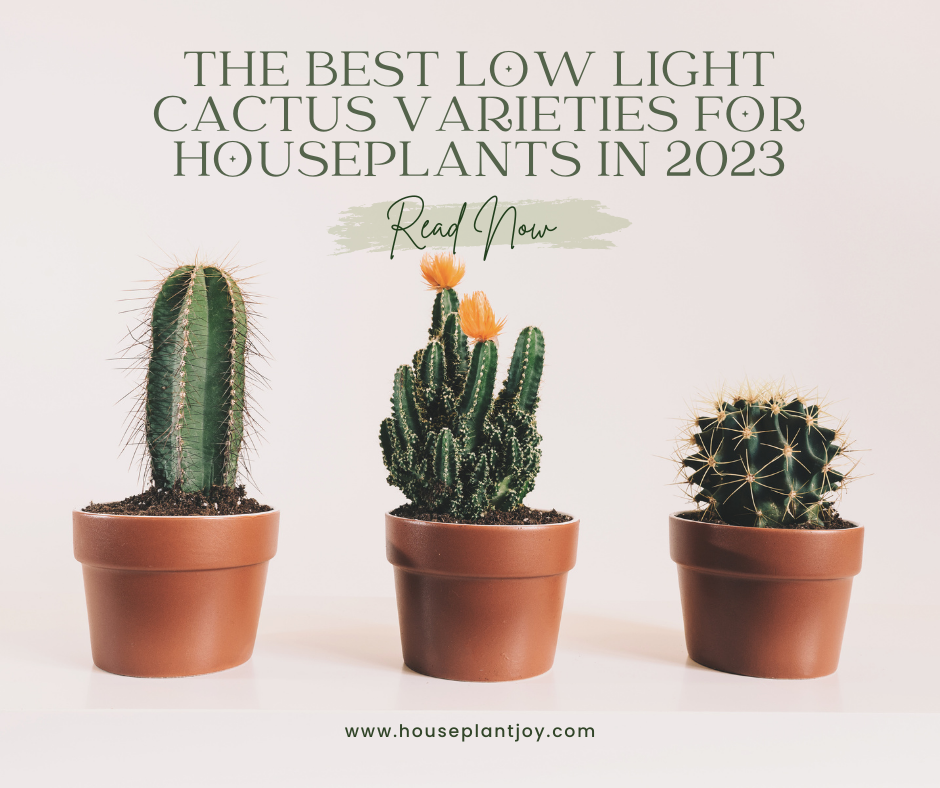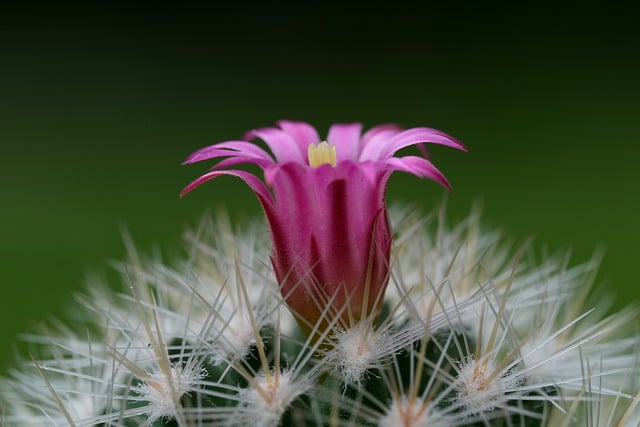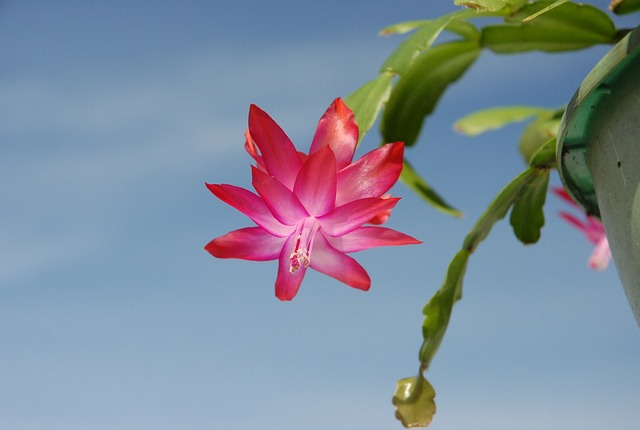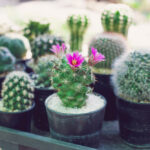HousePlantJoy is supported by our audience. When you purchase through one of our links, we may earn a small affiliate commission. As an Amazon Associate I earn from qualifying purchases. Your cost is not affected.
==================
Love the cacti but have a less sunny home to keep them in? Not all cactus need full sun. Some prefer bright indirect light. Other cactus plants do well in even less light. Plant enthusiasts should consider the low-light cactus varieties for your home’s lower-light or partial shade areas.
Are you tired of struggling to find the perfect houseplant to thrive in your low-light home? Look no further! Discover how cacti and succulents can be the ideal solution to transform your indoor garden into a vibrant oasis.
In this blog post, we will explore the best low-light cactus varieties for houseplants, providing all the information you need to create a thriving indoor garden even in the darkest corners of your home.
Short Summary
- Understanding Low Light Conditions involves assessing indirect light and proper drainage for low-light cacti to survive.
- Discover the top 14 low-light cactus varieties suitable for indoor houseplants with unique features & care requirements.
- Care considerations include allowing the soil to dry out, maintaining temperatures, providing well-drained soil, occasional fertilization & monitoring pests. Artificial lighting can supplement natural light, but consider positioning & spectrum of grow lights carefully regarding pet safety.
Understanding Low Light Conditions
Low light conditions refer to environments with limited natural light, making it challenging for many plants to thrive. However, low-light succulents and cacti are uniquely adapted to these environments, allowing them to survive and flourish with minimal care.
Some popular low-light succulents include snake, jade, and mother-in-law’s tongue. These plants tolerate common light conditions and maintain their vibrant colors and structures.
To establish a thriving indoor garden for low-light succulents and cacti, assessing the amount of indirect light the area receives and ensuring proper drainage is essential. Depending on where it first grew, each species has specific lighting needs.
Low-light succulents and cacti offer several advantages, as they are well-suited for indoor gardens, offices, or rooms with limited sunlight exposure. They can survive and thrive in low-light environments, making them a popular choice for plant enthusiasts who have limited natural light in their homes.
Top 14 Low Light Cactus Varieties for Houseplants
In the quest to find the perfect low-light cacti, we have compiled a list of the top 14 low-light cactus varieties that make the perfect for indoor houseplants. Each of these species is uniquely capable of thriving in low-light environments and will bring life and color to your indoor garden.
Get ready to explore these fascinating cacti and learn about their unique features and care requirements.
Christmas Cactus (Schlumbergera)
The Christmas Cactus (Schlumbergera) is a small cactus known for its vibrant flowers and ability to thrive in partial shade. Native to the tropical rainforests of Brazil, Schlumbergera is an epiphyte with flat, leaf-shaped, or bottle-shaped stems that remain green throughout the year. As an epiphyte, it grows on trees in wet and humid regions or on rocky grounds as a lithophyte.
Caring for the Christmas Cactus requires attention to overwatering and direct sunlight, as these factors can lead to leaf burn and damage. To keep your Schlumbergera happy, provide well-drained soil and water it thoroughly only when the top inch of soil is dry. During winter, cooler temperatures and shorter periods of daylight are beneficial for stimulating flower growth. Please place it in bright, indirect light and only water it when the soil is dry.
Easter cactus (Hatiora Gaertneri)
Another stunning low-light cactus is the Easter cactus (Hatiora gaertneri), native to the rainforests of Brazil. It is characterized by its oval-shaped leaves with rounded edges and star-shaped flowers, which bloom from March to May. This cheerful cactus will brighten any indoor garden with its vibrant colors and profuse blooms.
The Easter cactus prefers bright light but should be kept out of direct sunlight to prevent damage to its leaves. This makes it an excellent choice for low-light environments where it can receive indirect light without the risk of sunburn. Its beautiful blooms and adaptability to low light conditions make it a popular choice for indoor gardens.
Scarlet Ball Cactus (Parodia Haselbergii)
The Scarlet Ball Cactus (Parodia Haselbergii) is a native species to Brazil and the highlands of South America. Its striking bright orange or yellow flowers make it an eye-catching addition to any indoor garden. This cactus prefers bright sun for optimal growth while avoiding intense heat.
Though the Scarlet Ball Cactus enjoys bright sun, it can also adapt well to low-light environments. Its vibrant flowers and ability to tolerate a range of light conditions make it a popular choice for indoor gardeners looking for a low-maintenance yet visually appealing cactus.
Living Rock (Lithops spp.)
Living rock (Lithops spp.) is a fascinating succulent resembling a rock or pebble. This unique cactus is characterized by its small, stemless form and impressive lifespan of 40 to 50 years. Living rock thrives in full sun year-round and typically begins to flower once it has reached the age of 3 years.
Despite its preference for full sun, Living Rock can also adapt well to low-light environments, making it an intriguing and low-maintenance addition to your indoor garden. Its distinctive appearance and ability to thrive in various lighting conditions make it an excellent choice for any plant enthusiast.
Mistletoe Cactus (Rhipsalis Baccifera)
Mistletoe Cactus (Rhipsalis baccifera) is a unique species of cactus that prefers indirect light and can tolerate lower light conditions. Native to tropical and subtropical regions, Rhipsalis is an epiphytic cactus that typically grows in hanging baskets, providing a lovely cascading effect.
Caring for Rhipsalis involves ensuring that the soil is well-drained and providing moderate to low watering. Misting the cactus can help maintain appropriate humidity levels. Its ability to thrive in low light conditions and its cascading growth make it a popular choice for indoor gardens, especially when placed in hanging baskets.
Epiphyllum (Orchid Cactus)
Epiphyllum, Orchid Cactus, is a stunning low-light cactus that boasts large, eye-catching, and highly aromatic blossoms, albeit only lasting a single night. This cactus thrives in 50 to 75 percent shade and bright, indirect light, making it an excellent choice for indoor gardens with limited natural light.
Caring for Epiphyllum involves providing consistent moisture to the soil and avoiding over or under-watering. This cactus also requires moderate to high humidity and more water than most cacti varieties. Its beautiful blossoms and ability to thrive in low light conditions make it a popular addition to any indoor garden.
Peanut Cactus (Echinopsis Chamaecereus)
The Peanut Cactus (Echinopsis chamaecereus) is a charming, low-maintenance cactus native to South America and Argentina. It is characterized by its finger-like stems and large, orange-to-red flowers that bloom in late spring. The Peanut Cactus is a mat-forming cactus that typically reaches a height of up to 6 inches.
This versatile cactus can thrive in bright and low-light environments, making it an excellent choice for indoor gardens with limited natural light. Its vibrant flowers and ability to adapt to various lighting conditions make it a popular choice for plant enthusiasts looking for a low-maintenance cactus with a unique appearance.
Moon Cactus (Gymnocalycium Mihanovichii)
The Moon Cactus (Gymnocalycium Mihanovichii) is a small, vibrant cactus composed of two separate cacti artificially joined together. Native to South America, this eye-catching, low-maintenance houseplant is typically grown in pots. The Moon Cactus is easily identifiable by its distinct shape and bright, vibrant colors, including pink, yellow, orange, and red.
To care for the Moon Cactus, place it in bright, indirect light and water it sparingly. Fertilize it once a month during the growing season and keep it in a well-draining potting mix.
While the Moon Cactus is not known to be toxic to pets, the spines can be sharp and may cause injury, so keeping pets away from the plant is advisable.
Old Lady Cactus (Mammillaria Hahniana)
The Old Lady Cactus (Mammillaria hahniana) is a flowering cactus native to central Mexico. It is characterized by its spherical stems covered in white spines and white down, reaching up to 10 inches in height. This cactus is not only visually appealing but also low maintenance, making it an excellent choice for indoor gardens with limited natural light.
Caring for the Old Lady Cactus involves providing bright, indirect light and well-drained soil. Water the cactus only when the soil is dry to the touch and fertilize it once a month during the growing season. Its beautiful appearance and adaptability to low light conditions make it a popular choice for indoor gardeners.
Thimble Cactus (Mammillaria Gracilis Fragilis)
The Thimble Cactus (Mammillaria gracilis fragilis) is a small pincushion cactus native to Central Mexico. It typically grows in clusters and stands less than 6 inches tall, with a cylindrical green body interwoven with white spines. This charming cactus blooms in the spring and continues to bloom through late summer until autumn.
The Thimble Cactus prefers full sun and bright light for optimal growth. However, it can also adapt well to low light environments, making it an excellent choice for indoor gardens with limited natural light. Water the Thimble Cactus sparingly during the summer and only if it appears wilted during the winter months.
Its beautiful blooms and adaptability to low light conditions make it a popular choice for indoor gardens.
Star Cactus (Astrophytum Myriostigma)
The Star cactus (Astrophytum myriostigma) is a small, spineless cactus native to the lower Rio Grande Valley of Texas, as well as the states of Nuevo León and Tamaulipas in Mexico. This cactus has a disk- or dome-like shape, typically measuring between 0.7-6 inches across and up to 2.7 inches tall.
Despite its preference for full sun, the Star cactus can also adapt well to low-light environments, making it an excellent addition to your indoor garden. Its distinctive appearance and ability to thrive in various lighting conditions make it an excellent choice for any plant enthusiast.
However, it is important to note that the Star cactus is recognized as an endangered species in the United States.
Flesh Cactus (Euphorbia Obesa)
The Flesh Cactus (Euphorbia obesa) is an indigenous succulent plant from South Africa, featuring a round, fleshy body with a unique pattern of ribs and spines.
Keep in mind that this slow-growing species can reach a maximum height and width of 8 inches and is a popular choice for indoor gardens with limited natural light.
To care for the Flesh Cactus, provide well-drained soil and water it sparingly. Place it in bright, indirect light and fertilize it every few months. Additionally, protect the plant from extreme temperatures and humidity.
Its unique appearance and ability to thrive in low light conditions make it an excellent choice for any indoor garden.
Zebra Plant (Haworthia Attenuata)
The Zebra plant (Haworthia attenuata) is a popular houseplant known for its vividly-striped foliage and beautiful golden flowers. This low-light cactus variety is characterized by white, bumpy tubercles that create stripes on the outer leaves. It is an ideal choice for indoor gardens with limited natural light.
Caring for the Zebra plant requires providing consistent moisture to the soil, making sure to avoid over or under-watering. This low-maintenance cactus thrives in bright, filtered light and can be easily incorporated into any indoor garden, creating a visually appealing and vibrant space.
Ponytail Palm (Beaucarnea Recurvata)
The Ponytail palm (Beaucarnea recurvata) is an excellent choice for brightening rooms with low lighting levels. It grows slowly and needs very little maintenance. It is easily identifiable by its bulbous trunk, which is used to store water, and its thin, hair-like leaves extending from the top of the trunk like a ponytail.
To care for the Ponytail palm, place it in bright, indirect light and water it sparingly. Fertilize it once a month during the growing season and keep it in a well-draining potting mix.
Consider the Full Height
The Ponytail palm can grow up to a height of 10 feet. When kept indoors, however, it typically attains a height of 3-4 feet.
Its unique appearance and ability to thrive in low light conditions make it a popular choice for indoor gardens.
Caring for Low Light Cacti
Proper care for low-light cacti involves allowing the soil to dry out completely before watering and being mindful not to over-water, as they generally require less water than succulents that thrive in direct sunlight. Low-light succulents also thrive in temperatures between 60°F and 75°F, with a slight drop at night.
When it comes to fertilizing and repotting low-light cacti, it is recommended to provide well-drained soil, occasional fertilization, and repotting when necessary. Be sure to monitor for common pests like mealybugs and spider mites, which can cause damage to your indoor garden if not properly kept in check.
Artificial Lighting Options
Artificial lighting can be employed to supplement natural light for low-light cacti, ensuring that they receive the appropriate amount of light for optimal growth and health. Grow lights come in a variety of types, such as fluorescent, LED, and HID bulbs, allowing you to choose the best option for your specific needs and preferences.
Distance and Amount of Time
Positioning of grow lights for low-light succulents is very important. Too close and the plants can become overexposed resulting in harm. Too far, and the plants will not receive enough light. The key is to strike a balance.
The optimal distance from the grow light varies depending on the type of lighting. Additionally, the amount of time succulents need to spend in light can differ for different species.
It is also critical to select a grow light that supplies the correct spectrum of light for succulents, which generally need more blue and red light.
Pet Safety and Low Light Cacti
It is essential to consider pet safety when introducing low-light cacti into your home, as some species may be toxic to pets. For example, the African Milk Tree and Jade plants are known to be poisonous to pets. Similarly, Aloe Vera should be kept out of reach of both children and pets as ingestion of its leaves can be detrimental.
In contrast, the Windowpane Plant is considered safe for pets. Always research the specific cactus species you are planning to introduce into your indoor garden and take necessary precautions to ensure the safety of your pets. By doing so, you can create a beautiful and safe indoor garden for both you and your furry friends to enjoy.
Summary
We believe that low-light cacti offer the perfect solution for transforming your indoor garden into a vibrant oasis, even in the darkest corners of your home. By choosing the right cactus species, providing proper care, and considering pet safety, you can create a thriving indoor garden that will bring life and color to any space. It’s time to embrace the world of low-light cacti and watch your indoor garden flourish!
Frequently Asked Questions
Can a cactus live indoors with low light?
Yes, some cacti can thrive indoors with low light; however, they usually prefer bright natural light and indirect sunlight. To create the best growing conditions, position them near an east-facing window that provides plenty of morning sun and diffused light throughout the day.
What cactus grows in the shade?
If you’re looking for a cactus that grows in the shade, Rebutia is an excellent choice. This genus of barrel-shaped cacti is native to Bolivia and Argentina and is considered one of the most shade-tolerant among all cactus genera.
What’s more, these plants offer brightly coloured blooms throughout the growing season.
What succulents and cactus for low light?
For those with low light conditions, Haworthia, String of Pearls, and Aloe Vera are some great succulent options. Additionally, Rat Tail Cactus and Golden Barrel Cactus make excellent cacti for low light environments.
With proper care, these hardy plants can thrive in a variety of light settings.
Can Christmas cactus survive low light?
Christmas cactus can survive in low light conditions. But it requires indirect bright light to thrive and bloom correctly.
Therefore, it is best to give the cactus a few hours of daily sunlight to ensure optimal growth and flower production.
Discover HousePlantJoy: Your Ultimate Destination for Plant Care, Houseplants, and Home Design
Discover the ultimate oasis for plant enthusiasts, home designers, and green thumbs alike! Join our thriving community at HousePlantJoy and immerse yourself in the captivating world of plant care, houseplants, and home design.
? Facebook: Connect with fellow plant lovers, share tips and tricks, and stay updated on the latest trends in plant care. Follow us on Facebook for a daily dose of inspiration!
? Instagram: Dive into a visual paradise of lush foliage and stunning interiors. Follow us on Instagram for captivating plant photography, expert advice, and behind-the-scenes peeks into our vibrant community.
? Pinterest: Unleash your creativity and unlock a treasure trove of inspiration. Explore our curated boards on Pinterest and discover innovative plant displays, home design tips, and DIY projects to elevate your green spaces.
? Twitter: Stay in the loop with real-time updates, engaging conversations, and lively discussions. Follow us on Twitter to connect with like-minded plant enthusiasts, get exclusive product reviews, and stay ahead of the curve in the world of plants and home decor.
Join our thriving community today and experience the joy of nurturing plants, transforming spaces, and connecting with a passionate community. Let’s cultivate beauty together at HousePlantJoy!










